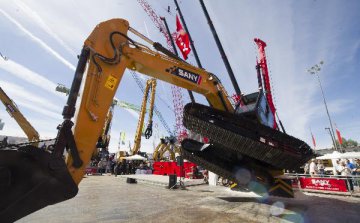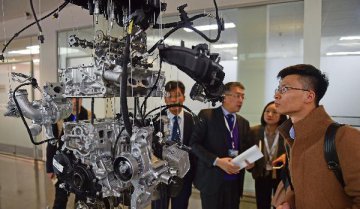
Chinese factory-gate inflation is threatening to turn negative, metals prices are in the dumps and industrial profits just logged their sharpest fall since 2009. Where then, are the big state-owned company bond defaults to rock the financial system, as in 2015?
Last time Chinese inflation and profits collapsed, state-owned steel, coal and aluminum companies defaulted in droves, spooking global investors. This time, despite state-controlled enterprise profits diving 24% on the year in January and February, there has been barely a blip: Just one state-owned firm has defaulted on a publicly issued onshore bond since third-quarter 2018, according to Wind. Private-sector companies in a range of industries have defaulted, but while that is terrible news for employment and growth, it matters less for financial-system stability: State-owned enterprises account for around two-thirds of corporate debt in China, according to Matthews Asia.
Part of the explanation is seasonality. The Lunar New Year holiday’s shifting dates probably means a weak February and a relatively strong March this year for most Chinese data. That doesn’t change the fact that SOE industrial-sector profits, after two years of outperformance, have been growing slower than private profits for the past couple months.
A more likely explanation is that the sectors getting hit are different this time, and mostly remain in better shape financially than during the last round of SOE defaults.
Industrial profits fell 14% on the year in January and February. But excluding autos, oil processing, nonferrous metals and chemicals—all heavily state-invested industries—overall profit growth would have been 0.2%, says Nomura. Those sectors that are in bad shape still aren’t in nearly as bad condition as steel and coal were in 2015 and 2016. Auto and chemical company profit margins have deteriorated since early 2018, but they still clock in at 4.5% and 5.2%, respectively. Only the nonferrous-metals sector, with a margin of just 1.4% in early 2019, looks in serious trouble.
The other factor is borrowing costs. Profit growth for both SOEs and private-sector companies has deteriorated since 2017, but SOE borrowing costs have come down sharply. High-rated SOEs can borrow at around 3%-3.5% for one year in the bond market, down more than 1 percentage point from late 2017. Regulators’ crackdown on bond-backed wealth-management products, meanwhile, has largely locked private companies out of the bond market. They pay around 6% for bond or bank finance, the same as in 2017, even though the overall return on assets for private-sector industrial companies has shrunk from 9.8% to 7.4% since then. Many weaker private firms are therefore struggling to refinance.
For investors worried about an immediate financial crisis, this is relatively good news, since private firms in aggregate are still much less indebted than SOEs. For investors worried about China’s future growth, which depends on a dynamic private sector, it is far less reassuring.
Source: The Wall Street Journal
























Latest comments